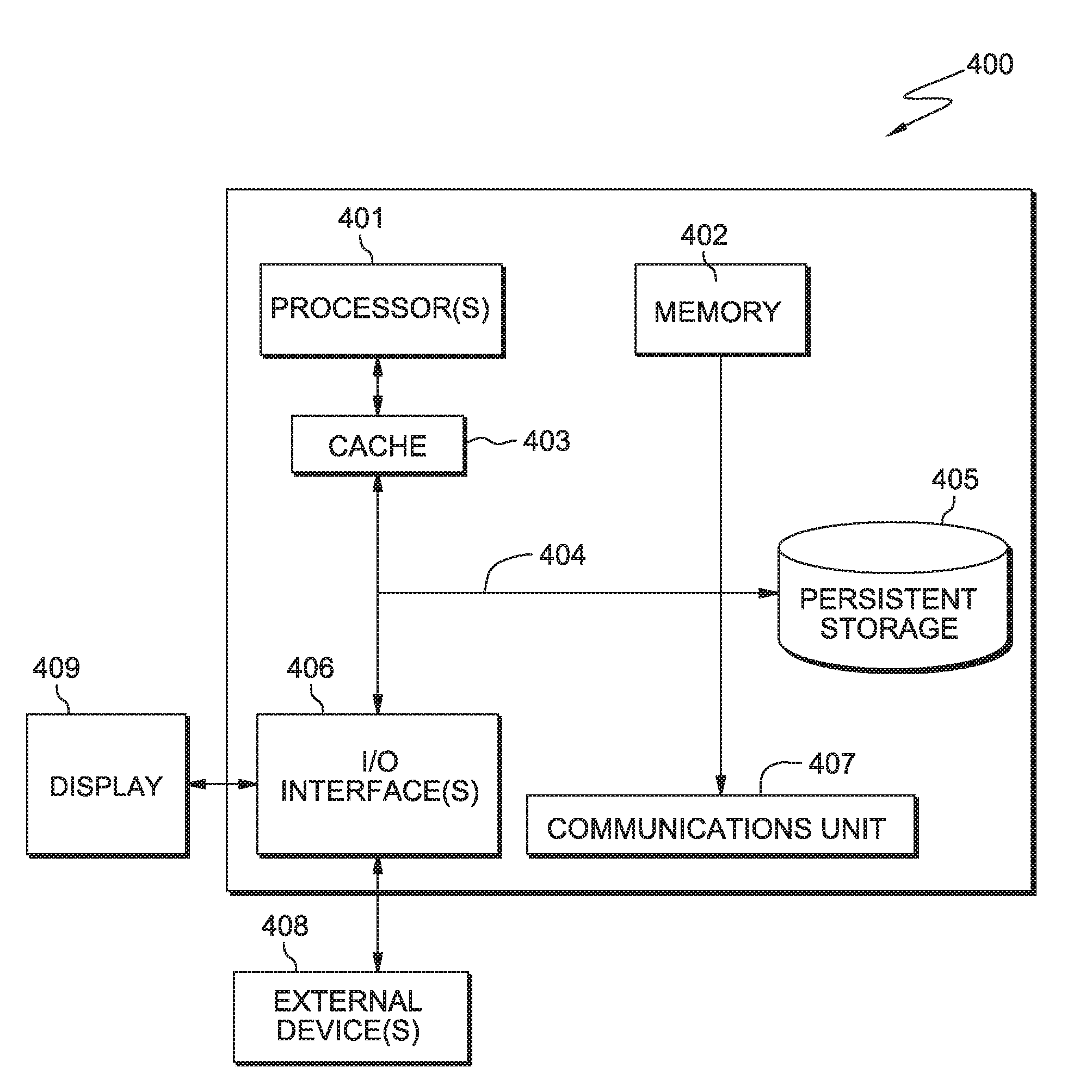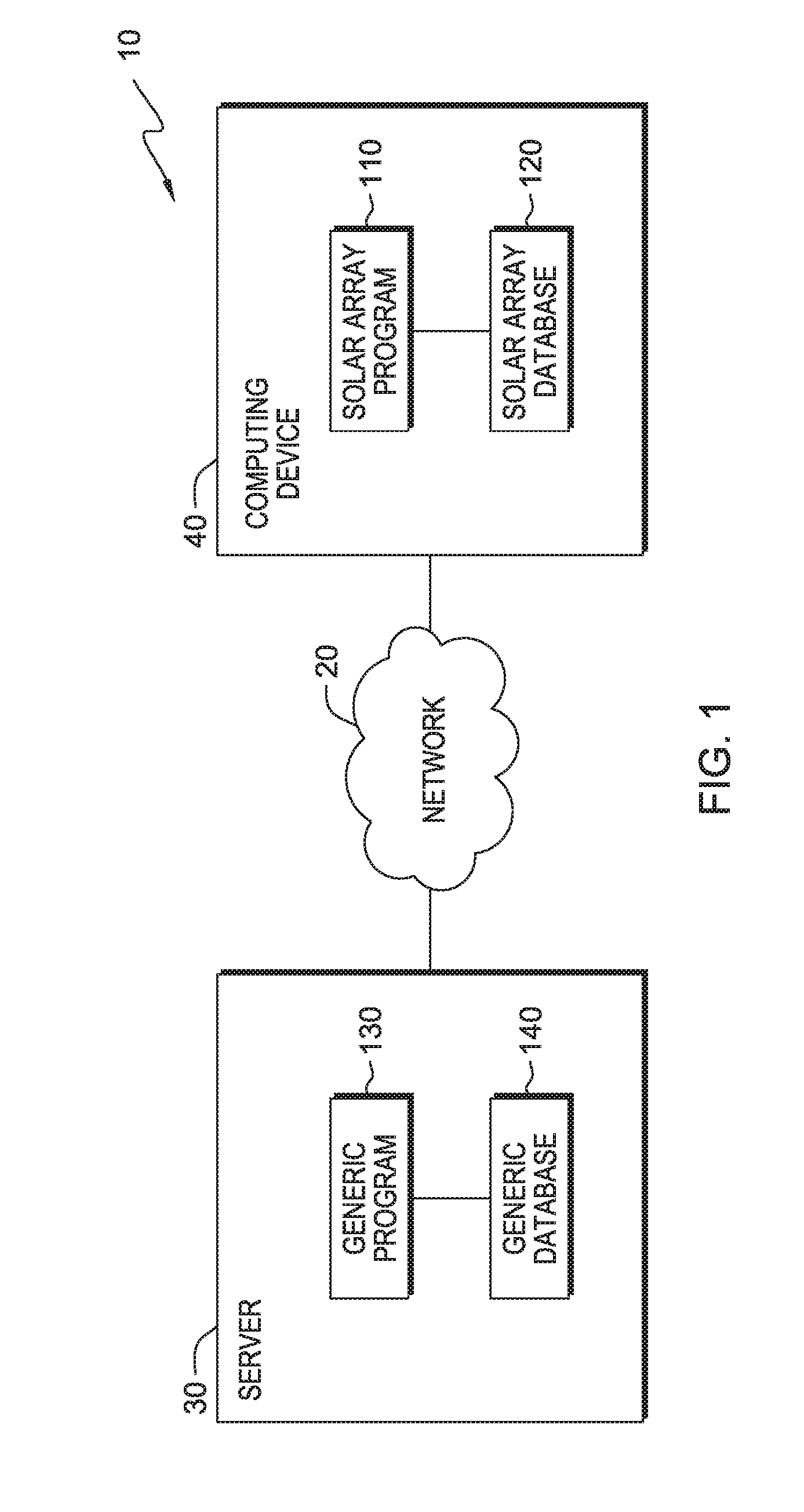Estimating solar array power generation
a solar array and power generation technology, applied in photovoltaic monitoring, power measurement by digital technique, meteorology, etc., can solve the problem that a single solar module can produce a limited amount of power
- Summary
- Abstract
- Description
- Claims
- Application Information
AI Technical Summary
Benefits of technology
Problems solved by technology
Method used
Image
Examples
Embodiment Construction
[0012]With the current state of solar power technology, solar array technology advances and electric cars with solar arrays have become more prevalent. The amount of sun that a car is exposed to throughout the day has an effect on the length of time the vehicle can be used before the need to use a charging station.
[0013]Embodiments of the present invention recognize the need for a user to be assured that the user's object, which includes solar panels, whether the solar panels are on a vehicle or house, will be charged enough to be able to satisfy the user's needs throughout a day or night. A user could have a variety of needs, depending on whether the object is mobile or stationary. For example, if the object is mobile, the user's needs may include a vehicle having enough power to return home after work without stopping by a charging station. On the other hand, if the object is stationary, the user's needs may include having enough power to host a party that would require more power...
PUM
 Login to View More
Login to View More Abstract
Description
Claims
Application Information
 Login to View More
Login to View More - R&D
- Intellectual Property
- Life Sciences
- Materials
- Tech Scout
- Unparalleled Data Quality
- Higher Quality Content
- 60% Fewer Hallucinations
Browse by: Latest US Patents, China's latest patents, Technical Efficacy Thesaurus, Application Domain, Technology Topic, Popular Technical Reports.
© 2025 PatSnap. All rights reserved.Legal|Privacy policy|Modern Slavery Act Transparency Statement|Sitemap|About US| Contact US: help@patsnap.com



